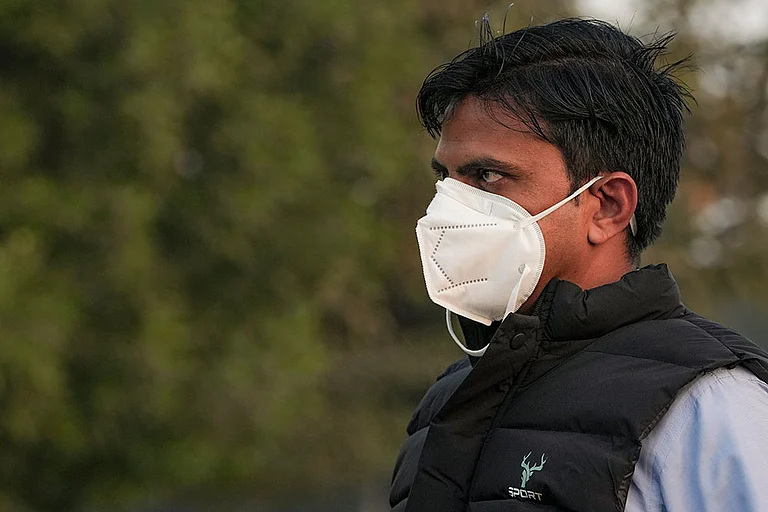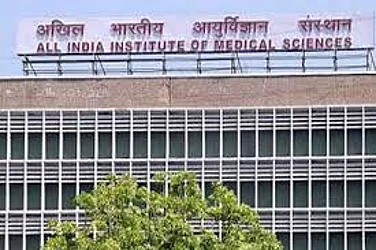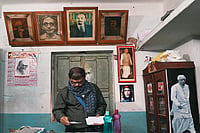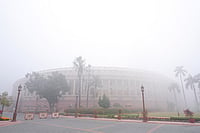The morning after Diwali is usually marked by the fragrance of flowers, sweets, and celebration. This year, however, as in past few years, Delhi-NCR awoke to a blanket of grey haze that blurred skylines and irritated eyes and throats. The air quality, already precarious in the lead-up to the festival, deteriorated sharply in the days following the festival of light and has remained poor since.
According to data from the Central Pollution Control Board (CPCB), the city’s Air Quality Index (AQI) hovered between 350 and 360 — categorised as “very poor” — during the festive period. To make the matter worse, Delhi’s air quality plunged to the “severe” category on 2 November with readings above 400. Officials attributed the spike to a combination of post-Diwali firecracker emissions and stagnant winds.
Doctors are reporting a sharp rise in complaints of coughing, breathlessness, and chest congestion, particularly among children, the elderly, and those with chronic respiratory or heart disease as the city struggles to breathe.
Dr. Vijay Kumar Agarwal, Head of Pulmonology and ICU at Yatharth Super Speciality Hospital, Faridabad tells The Health Outlook that the rising pollution levels are inflicting measurable, long-term harm on lungs, hearts, and even unborn children.
Dr. Agarwal explained that every jump in AQI — whether from “moderate” to “poor,” or “very poor” to “severe” — brings a measurable rise in fine particulate matter (PM₂.₅ and PM₁₀). These microscopic pollutants penetrate deep into the bronchi and alveoli, inflaming the airway walls and reducing oxygen exchange.
For asthma patients, this means tighter chests, wheezing, and increased reliance on rescue inhalers, he said. Studies from AIIMS and Vallabhbhai Patel Chest Institute show a 15–25 % uptick in asthma-related emergency visits within 48 hours of a sharp pollution spike. While, in those with COPD, high pollution triggers acute exacerbations — prolonged coughing, mucus retention, and oxygen desaturation — often necessitating hospitalization or short-term steroids and antibiotics. Even healthy lungs aren’t spared; long exposure to PM₂.₅ acts like slow scarring, accelerating decline in lung function.
Dr. Agarwal said they are getting patients complaining of dry cough, throat irritation, breathlessness, and chest tightness. “Many are middle-aged individuals with previously mild asthma now requiring nebulization. Geriatric wards too are seeing spikes in COPD and heart-failure admissions, often precipitated by high particulate loads and hypoxia.”
“What is particularly concerning this year is the early onset and persistence of smog. Unlike previous winters when pollution peaked in November, the post-Diwali stagnation and low wind speed have trapped pollutants longer, extending exposure for millions.”
The matter of fact is that while everyone breathes the same air, not everyone bears equal risk.
Children under 10 years breathe faster and have developing lungs with smaller airways. Even a modest rise in PM₂.₅ can cause bronchitis, persistent cough, and long-term reduction in lung growth. Elderly citizens, especially those with heart disease, diabetes, or chronic bronchitis, experience worsening breathlessness and fatigue due to reduced oxygen supply and inflammation-driven cardiac stress.
Pregnant women are another vulnerable group. Exposure is linked with low birth weight, preterm delivery, and maternal hypertension. Outdoor workers — security guards, street vendors, drivers, and construction labourers — who spend eight to ten hours inhaling toxic dust and fumes, too are at health risk.
When the AQI exceeds 300, avoid outdoor exertion, keeping windows closed during peak hours, and using HEPA-grade indoor air purifiers.
Practical prevention strategy includes wearing a properly fitted N95/N99 mask outdoors (cloth masks are ineffective for PM₂.₅), zero indoor smoking and, restricting outdoor activity to mid-day hours when dispersion is relatively better.
Maintaining good hydration and balanced nutrition rich in antioxidants (vitamin C, omega-3 fatty acids) helps. For those with chronic illness, vaccination against influenza and pneumococcal infection remains an undervalued but vital preventive step.
The Indian Academy of Paediatrics (IAP) recommends that once AQI crosses 200 (“poor”), children should stay indoors during mornings and evenings. All outdoor physical training and playground activities should be suspended, schools should shift to indoor assemblies and well-ventilated classrooms with filtered air.
Parents should ensure air purifiers in bedrooms, with filters replaced every 3–6 months, child-sized N95 masks for older children who can tolerate them, no mosquito coils, candles, or incense inside the home, use of nasal saline drops or steam inhalation to clear pollutant deposits and prompt medical review for prolonged cough, noisy breathing, or reduced play activity, said Dr. Agarwal.
For expectant mothers, Dr. Agarwal warned, high pollution exposure during pregnancy raises risks of intrauterine growth restriction and gestational hypertension. Obstetricians now routinely counsel pregnant patients to avoid outdoor travel when AQI is above 300, keep rooms sealed during morning inversions, and use N95 masks if stepping out is unavoidable.
Balanced diet, hydration, and regular prenatal check-ups are crucial, as is mental well-being — smog confinement can increase stress and anxiety.
Older adults often have compromised lung elasticity and multiple co-morbidities. For them, he advised, staying indoors with clean, filtered air, keeping rescue medications (inhalers, sublingual nitrates, etc.) easily accessible, Monitoring oxygen saturation at home if possible, maintaining gentle indoor exercises like breathing drills or stretching instead of outdoor walks and seeking immediate medical attention for sudden confusion, chest pain, or worsening breathlessness.
Short-term precautions save lives, but they cannot substitute systemic control. Avoiding crackers, carpooling, and supporting clean-fuel policies are not lifestyle sacrifices but survival necessities, said Dr. Agarwal.

Dr. Vijay Kumar Agarwal, Head of Pulmonology and ICU at Yatharth Super Speciality Hospital, Faridabad.


























